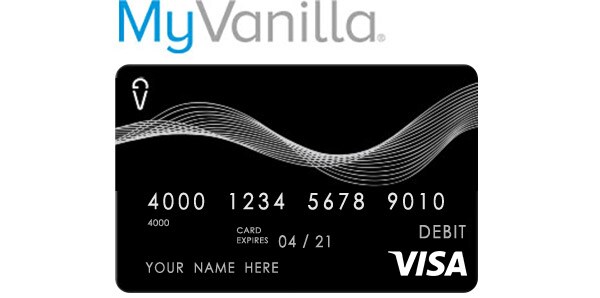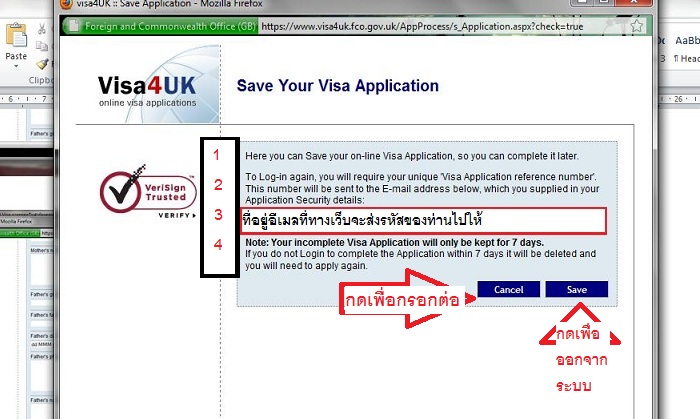
See more

How do you reload a prepaid Visa card?
Arrange for a paycheck or other regular payment to be directly deposited onto the card. Transfer money from a checking account or another prepaid card. Buy a “reload pack” to add a certain amount to your card. Add funds at certain retail locations or at the financial institution that provides the card.
Can Visa gift cards be reloaded?
The biggest difference between the two reflects their permanence: prepaid cards can be reloaded and used indefinitely, while gift cards can generally only be used until the dollar amount on them is exhausted.
Where can I reload my prepaid card?
CVS, Rite Aid, Walgreens, Circle K, Dollar General, HEB, and more! You've got plenty of choices to find a spot to reload your Fancard Prepaid Mastercard® with cash. Some of these include CVS, Rite Aid, Walgreens, Circle K, Dollar General, HEB, and more! You can find which stores are closest to you here.
Can you reload a prepaid Visa card at an ATM?
Use our Prepaid Visa cards to help you manage your finances and make everyday purchases. Avoid the risk of carrying cash with a card that can be reloaded from anywhere with convenient 24-hour ATM worldwide cash access.
Is a Vanilla Visa Gift Card reloadable?
In addition, Vanilla Visa Gift Cards are not reloadable and cannot be returned once purchased. In the event your card is lost or stolen, you can contact customer care to request a replacement. (The fee varies by your cardholder agreement).
Can you reload money on gift cards?
Give the gift card to the cashier or customer service agent and tell him or her that you would like to reload the card. Visit the website of the gift card issuer. Alternatively, many businesses that offer gift cards give you the option of reloading the card online.
How much money can you put on a prepaid Visa card?
Most Visa prepaid card options will allow you to load up to $15,000 into the card account. If you're accessing a reloadable prepaid card, you can continue to add money to your account when you spend some of your current balance. In either scenario, though, you cannot surpass the $15,000 account balance limit.
How much money can you put on a Visa gift card?
Visa® Travel Cards At the time of purchase, you may load up to $3,000 on the card. Use your card everywhere Visa debit and credit cards are accepted. Use it for point-of-sale transactions or you may obtain cash from your card at any ATM location that bears the brand mark displayed on your card.
How do you deposit money into a prepaid bank card?
You can typically transfer money from your prepaid card to your bank account online, by logging in to prepaid card's app or website. If your prepaid card does not allow transfers to bank accounts, you can use a third party service like MoneyGram to make the transfer.
How much does it cost to reload a Visa gift card?
At grocery stores, it is typically a $4.95 fee on top of the amount on the gift cards.
Do banks sell reloadable Visa cards?
However, before you can use a prepaid card to make a purchase, you must “load” it with money. Almost all major banking institutions, such as Visa, MasterCard, and American Express offer prepaid cards.
How much does it cost to reload a gift card?
While activating or reloading a bank-issued card may cost anywhere from three to seven dollars, depending on the issuer and the dollar amount added, some consider this known fee preferable to those that can be assessed (e.g. overdraft, balance transfer, late fees, finance charges) when payment with a debit or credit ...
Can you reload a Visa gift card at Walmart?
No. Your Gift Card is not reloadable. What are the fees associated with the Gift Card? The Walmart Visa Gift Card comes in various fixed denominations and variable denominations between $25-$500.
Reloadable Visa Prepaid Cards
The all-purpose Visa Prepaid card is a reloadable card you can use in-person and online to:
Choose a card to fit your needs
Pay quickly and conveniently online and in stores — plus get your payday funds faster with direct deposit.
Visa Payroll and Healthcare cards
Your employer may offer you a payroll or healthcare prepaid card so you can manage your payday funds more easily — and enjoy many of the advantages of Visa.
Additional Resources
Get your Child Tax Credit payment fast when it’s directly deposited to a Visa Prepaid card.
What is a prepaid Visa card?
A prepaid Visa card provides shoppers with convenience and safety. Using plastic versus dollar bills and coins gives shoppers greater accountability – a recap of your electronic purchases that can be tracked by phone or online. Prepaid Visa cards come with protection against online theft, and they are safer to carry than cash. No credit check is required for a prepaid Visa card and you can have your payroll earnings deposited towards your balance. Your spending limit is equal to the available balance on your prepaid Visa card and you can reload your card at anytime. Reloading a prepaid Visa card is the process of adding additional money to your card. Your prepaid card may be reloaded at the retail store that issued your card, using money packs, via money transfer services such as Western Union or Money Gram and from your bank account.
How long does it take to transfer money from checking account to prepaid card?
This process will electronically transfer the amount of money you request from your checking account to your prepaid card, usually within one to three business days. Check with your bank for details. Signing up for direct deposit is free and your money will be added to your prepaid card faster.
Is a prepaid Visa card safe?
Prepaid Visa cards come with protection against online theft, and they are safer to carry than cash. No credit check is required for a prepaid Visa card and you can have your payroll earnings deposited towards your balance.
What Is a Reloadable Visa Card?
The term “reloadable Visa card” typically applies to any card that allows you to add money to it (unlike a credit card) and processes transactions on the Visa network.
Why is a prepaid card not good for credit?
A prepaid card will not help you build credit because these cards have no associated line of credit attached to them.
How Do You Put Money On a Prepaid Card?
Every reloadable prepaid card will have different rules for adding money to your account. Nearly every card issuer allows cardholders to accept direct deposits of checks into their account as a way of adding money.
Do Reloadable Visa Cards Have a Limit?
Most Visa reloadable prepaid cards allow you to load up to $15,000 into your card account before you reach your maximum limit.
What is a customized cash reward card?
The Bank of America® Customized Cash Rewards Secured Credit Card is a rare offering that allows you to earn cash back rewards you can redeem as a statement credit or deposit into your BoA savings account or checking account.
Is Netspend a credit card?
NetSpend is a leader in the prepaid card space. Netspend won’t evaluate your credit history to qualify you for this card because it is not a credit card.
Do prepaid cards charge late fees?
These cards don’t charge overdraft fees, cash advance fees, or late fees because they are not associated with a line of credit. However, you should always read your cardholder agreement because prepaid cards are not 100% fee-free.
How to withdraw money from a prepaid card?
Once you have your PIN, you can insert your prepaid card into a compatible ATM, enter the PIN, and withdraw an amount up to either the balance on your card or the maximum daily limit imposed by the card issuer or ATM owner , whichever is less.
How Much Cash Can I Withdraw From a Prepaid Card?
Typically, issuers of prepaid debit cards limit balances, but the maximum balance may be as high as $15,000 to $20,000.
What are the benefits of debit cards?
One of the benefits of debit cards is the ability to get cash back when you make an in-store purchase. This store sets the maximum amount it will allow you to withdraw through this method.
Is MetaBank a Visa prepaid card?
The similarity of this card to the Netspend cards is not surprising, as all are Visa prepaid card offering s issued from MetaBank®, and all offer cash withdrawals at Netspend Reload Network locations across the country.
Do debit cards have overdraft protection?
Prepaid debit cards at least avoid overdraft fees. However, some cards offer optional overdraft protection that may be subject to overdraft fees if the shortfall isn’t quickly corrected.
Do prepaid debit cards charge a fee?
After all, you already pay a monthly or per-use transaction fee, and many prepaid debit cards charge you when you load money. Unfortunately, charging customer fees to add money and to withdraw it is standard procedure in the prepaid card market.
Is a Visa gift card reloadable?
We are limiting our scope to prepaid debit cards issued under the Visa brand. This excludes gift cards (including the Visa gift card) which, while prepaid, are not reloadable and are difficult to convert into cash. We also omitted other types of debit cards, including a stimulus debit card or an EIP card.
What happens if you lose a travel visa?
Accidents happen. If you lose your Visa Travel card, you can get an emergency card replacement and cash disbursement.
What is the liability of a Visa card?
Use your Visa card to make purchases anywhere and you're protected from unauthorized use of your card or account information. With the Visa Zero Liability policy 1, your liability for unauthorized transactions 2 is $0-you pay nothing.
What is a travel card?
The Visa Travel Card is a Prepaid card specifically designed to conveniently meet the needs of travellers. Visa Travel cards are replaceable and can be used worldwide at merchants that accept Visa or to obtain local currency at any ATM that displays a Visa symbol.
Does Visa cover Canada?
1 Visa's Zero Liability Policy covers Canada-issued cards and does not apply to anonymous Visa Prepaid*, Visa Purchasing, Visa Corporate, Visa Commercial, or any transactions not processed by Visa. Visa Cardholders must notify their financial institution immediately of any unauthorized use. For specific restrictions, limitations and other details, please refer to your issuer cardholder documentation.
